
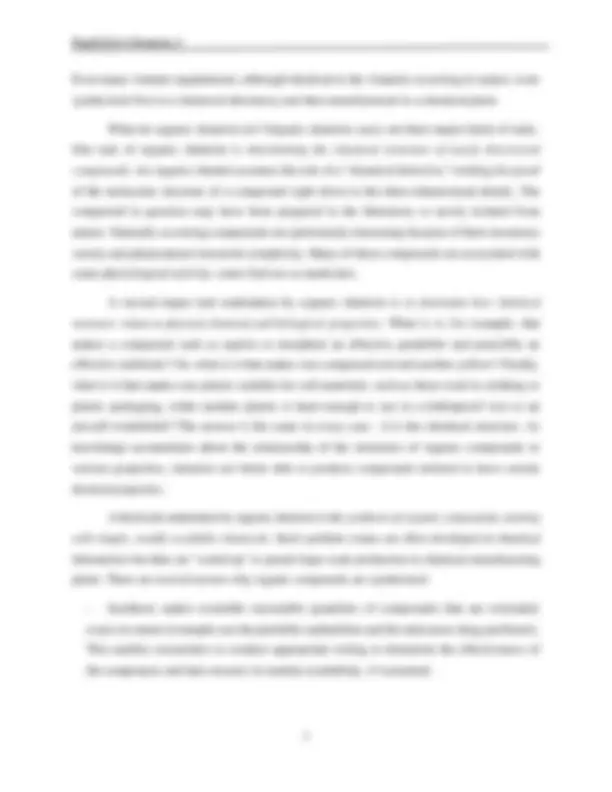


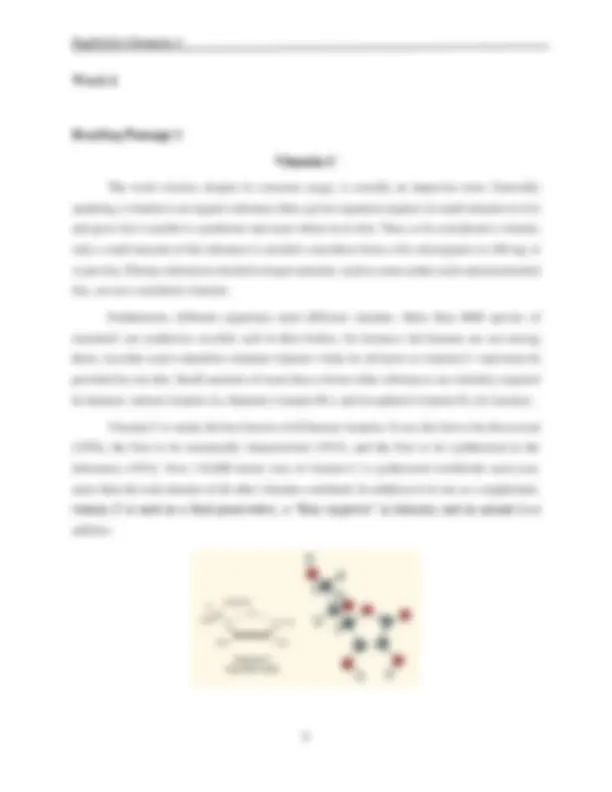

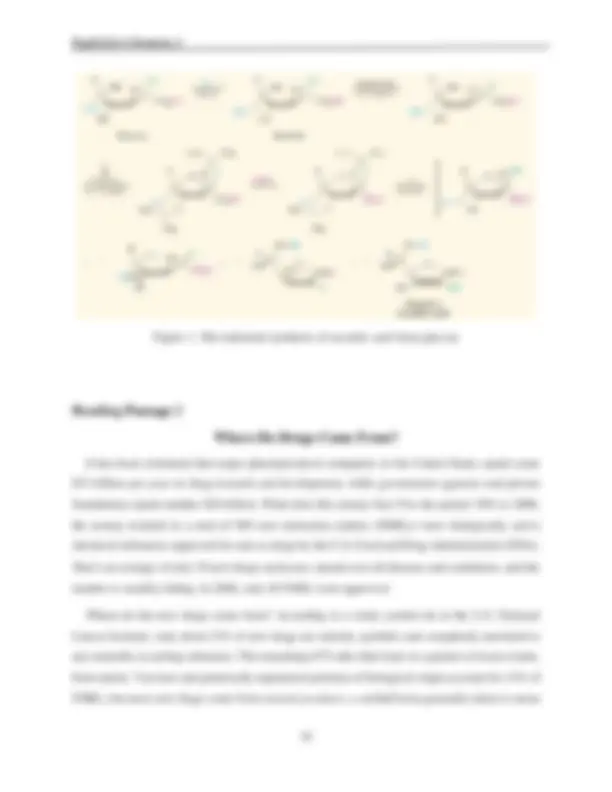
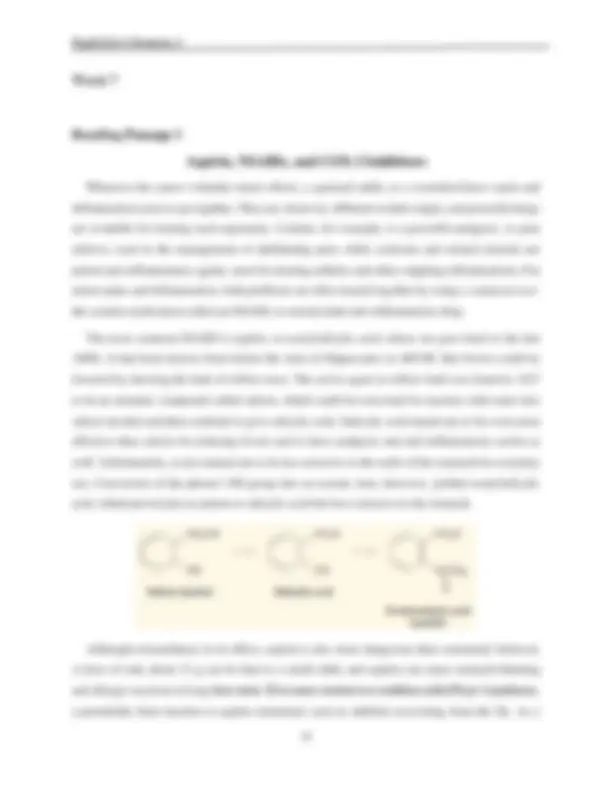
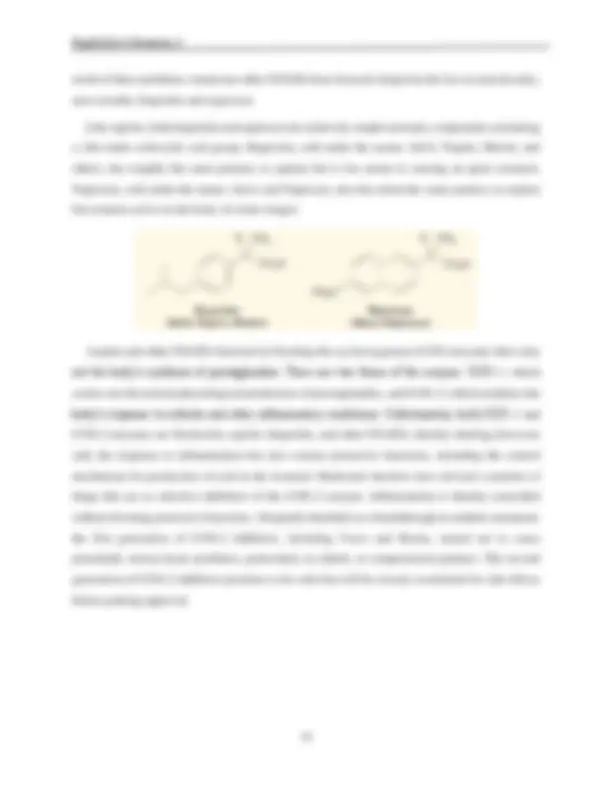

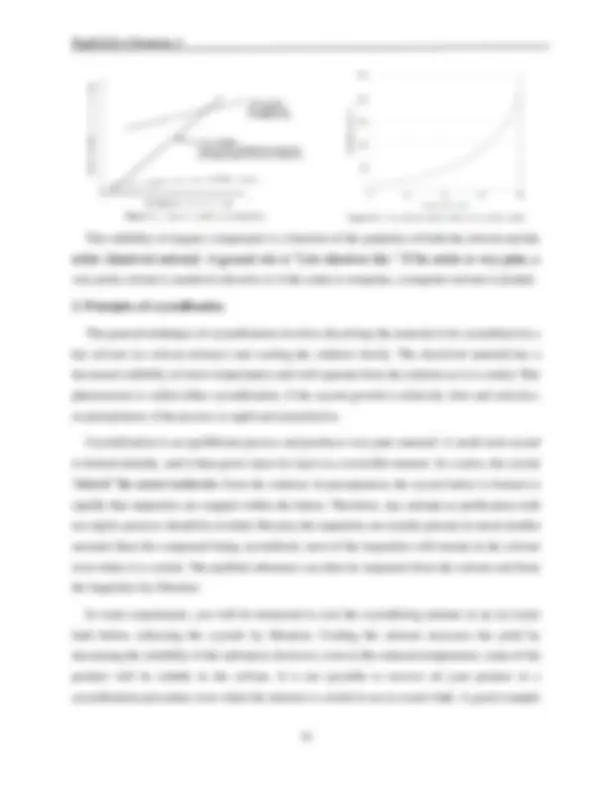
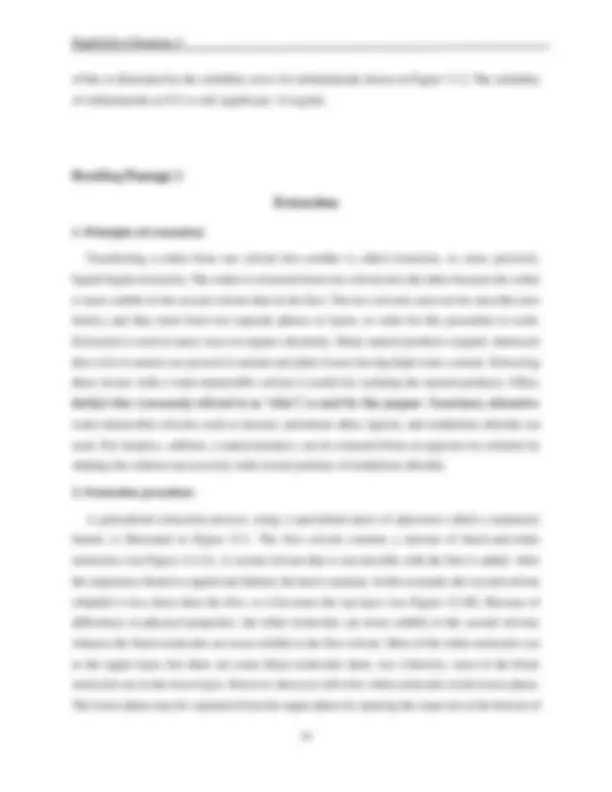
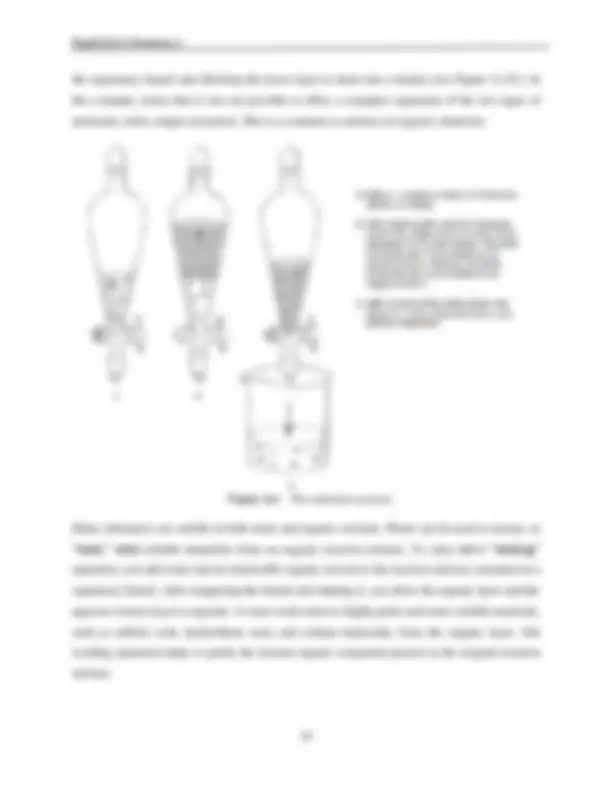
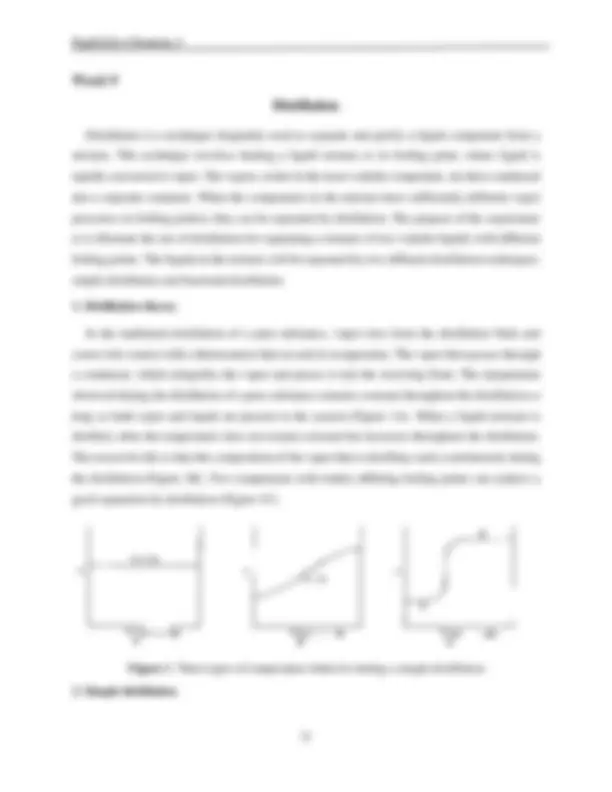
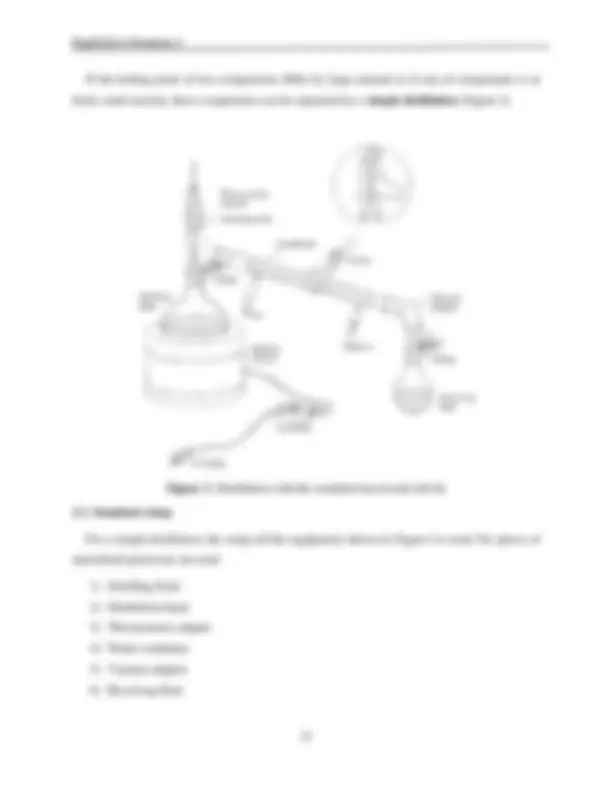
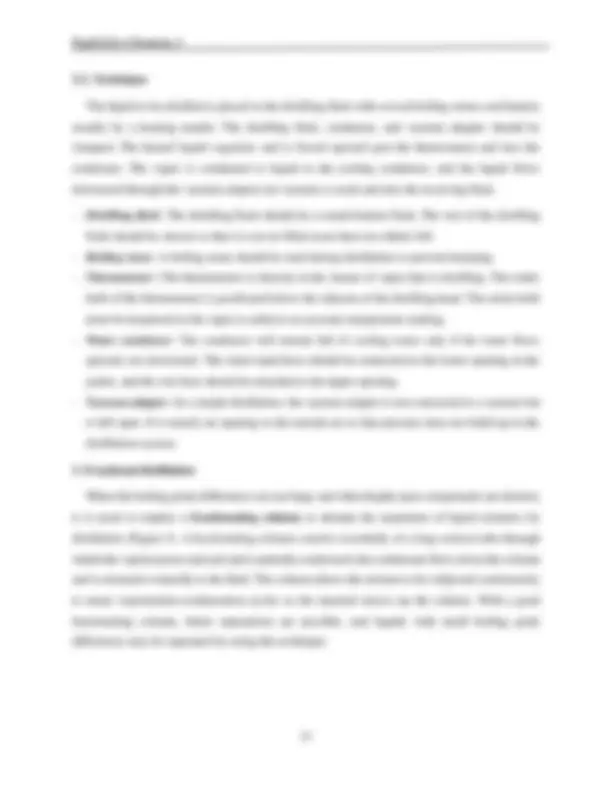


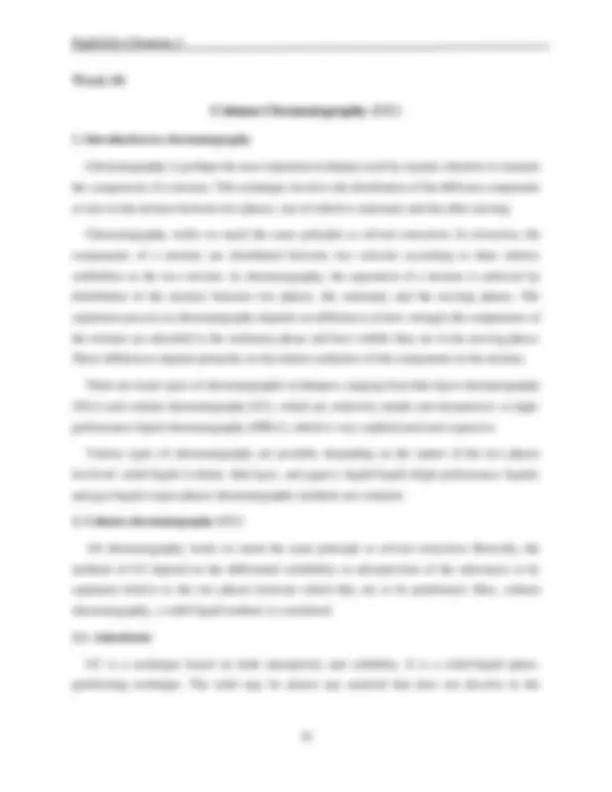
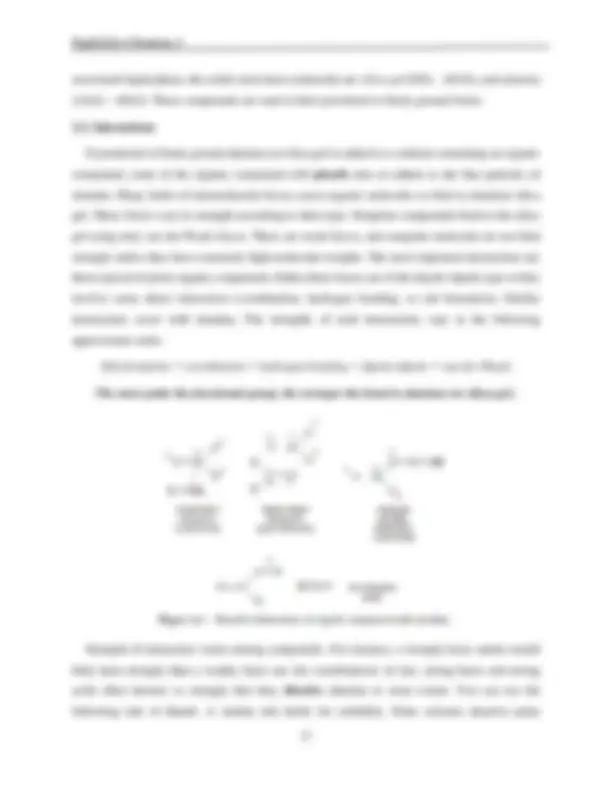
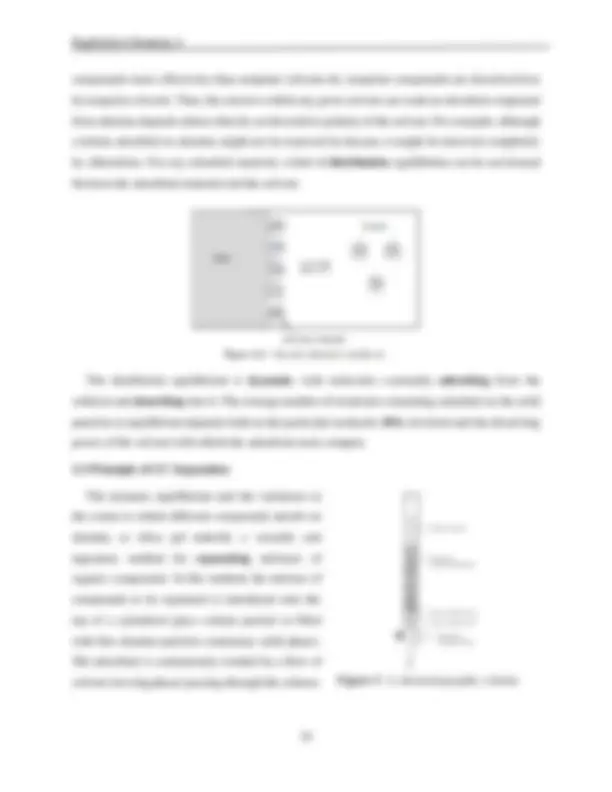
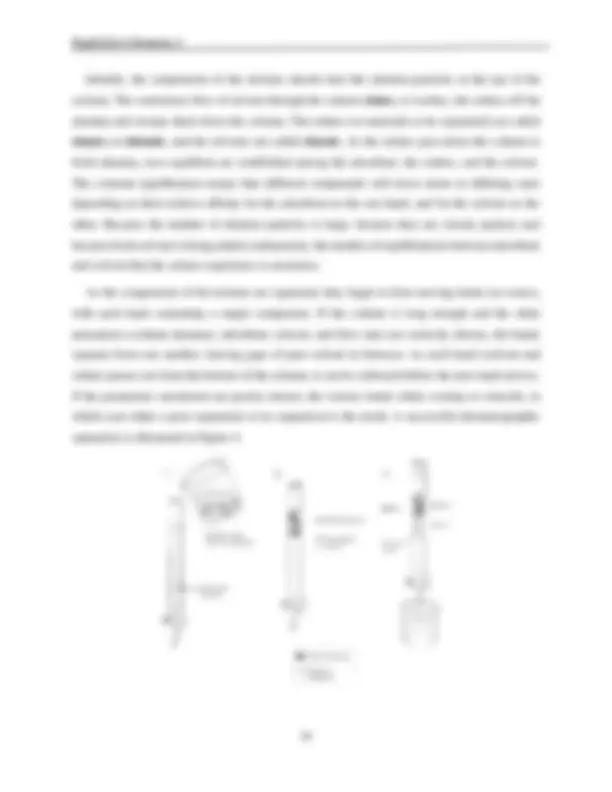
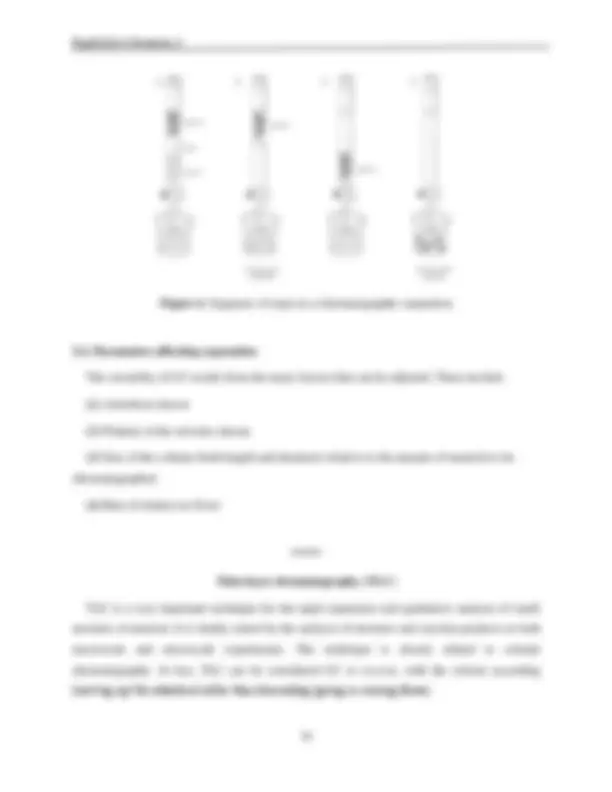
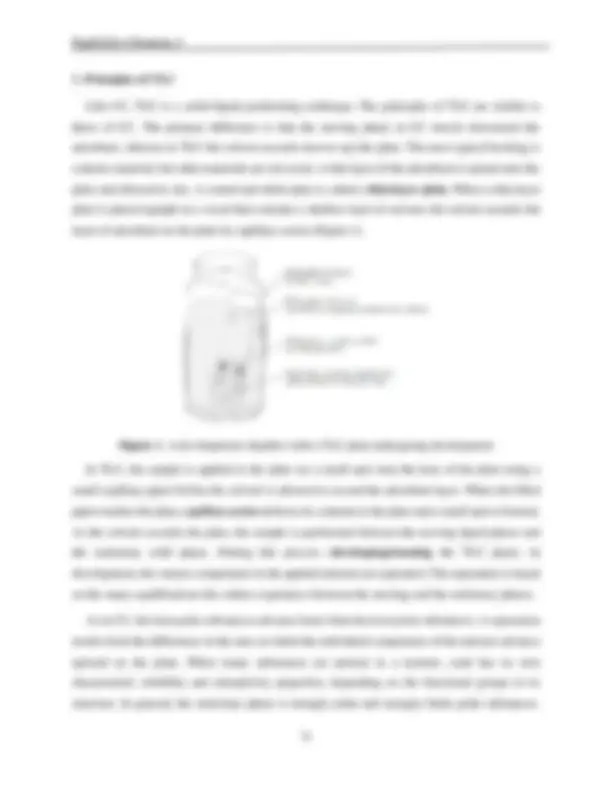
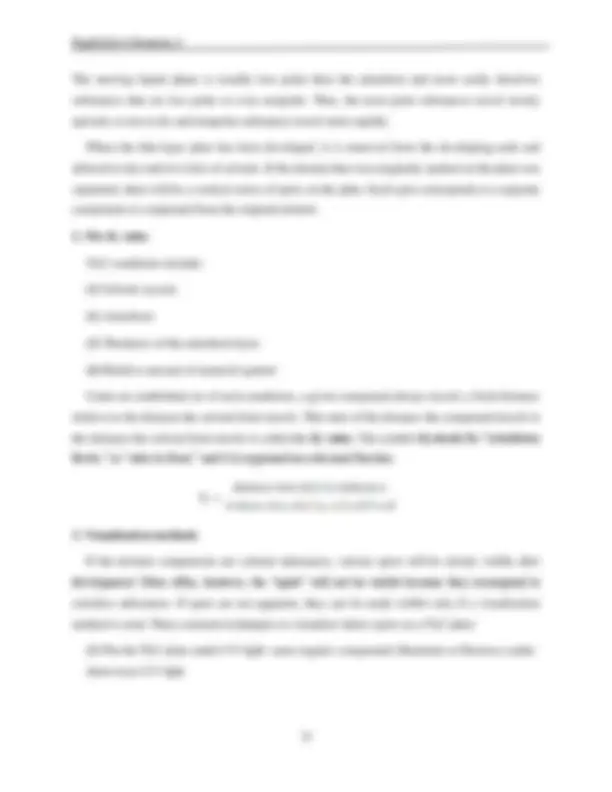




Study with the several resources on Docsity

Earn points by helping other students or get them with a premium plan


Prepare for your exams
Study with the several resources on Docsity

Earn points to download
Earn points by helping other students or get them with a premium plan
Community
Ask the community for help and clear up your study doubts
Discover the best universities in your country according to Docsity users
Free resources
Download our free guides on studying techniques, anxiety management strategies, and thesis advice from Docsity tutors
This document is of organic chemistry and medicinal chemistry reading which was in book for Chemist students
Typology: Summaries
1 / 34

This page cannot be seen from the preview
Don't miss anything!



























What is organic chemistry? What do organic chemists do? Why is organic chemistry important in this society? Chemistry is the branch of science devoted to the study of matter at the molecular level, focusing on the interactions of molecules and their atoms. All matter is chemical: the air we breathe, the water we drink, and the food we eat; all forms of life, whether bacteria, viruses, plants, or animals; and the clothing and building materials we use every day, whether natural (stone, wood), processed (rubber, steel, aluminum), or synthetic (plastics). Chemists study the composition, properties, and transformations of matter, in both its naturally occurring and synthetic (human-made) forms. Chemistry can be considered as "the central science: everything that goes on in biology or medicine has a chemical basis." There are four major fields of chemistry: organic chemistry, inorganic chemistry, analytical chemistry, and physical chemistry. There are also numerous subfields (for example, organometallic chemistry ) and interdisciplinary fields (for example, biochemistry ). Organic chemistry is, simply put, the study of the compounds of one element, carbon (atomic number 6). Why has carbon alone been singled out as the basis of a separate field of study, while the other 117 known elements are studied in the field of inorganic chemistry? The first reason is historical: Organic chemistry initially involved the study of compounds that could be obtained from living organisms (the "vitalism" theory), while inorganic chemistry was the study of compounds that originated from nonliving (nonorganic) matter. This distinction and theory became invalid in 1828, when Frederick Wohler demonstrated that urea, an "organic compound" excreted in the urine of mammals, could be produced by heating ammonium cyanate, an inorganic compound. A second reason why organic chemistry is a separate field has to do with sheer numbers: Approximately 7 million different organic compounds are known at present,
while there are "only" about 1.5 million known inorganic compounds. This large number of organic compounds arises from a unique property of carbon − its atoms can bond to one another in a virtually limitless number of arrangements. Organic compounds are typically rich in carbon and hydrogen, but many also contain one or more additional elements, usually oxygen or nitrogen but occasionally sulfur, phosphorus, or one of the halogens (fluorine, chlorine, bromine, and iodine). The subfield of organometallic chemistry focuses on compounds in which carbon is bonded to one of the metallic elements (for instance, lithium or magnesium). Organic chemistry is a relatively "young" science, only about 200 years old. However, many activities known to ancient civilizations actually involved the practice of organic chemistry; and the use of certain organic chemicals also dates well back into history. It's safe to say that organic chemistry, while a relatively new science, is a very old subject. Organic chemistry is a part of everything material that affects your daily life. Organic chemicals are involved in the biological processes that keep you alive. Aside from water and bone, your physical body consists mainly of organic chemicals: muscles and tissues (protein), blood constituents, hair and fingernails, fat, the glycogen in the liver and cells that provides quick energy, hormones, enzymes (such as those involved in metabolism), the substances responsible for vision, the chemicals that create nerve impulses, and the DNA that constitutes the genetic code in genes and chromosomes. Unnoticed, chemical reactions necessary to life are occurring all the time. Organic materials also provide shelter. The clothes you wear are made from organic chemicals; some (cotton and silk) are naturally occurring, and some (polyesters and nylon) are synthetic. The materials used in the construction of houses are organic as well, and again some are naturally occurring (for example, wood) and some are synthetic (PVC piping, vinyl siding, plastic electrical boxes and wire covering, floor tile, and carpet). Automobiles are increasingly made of organic plastics rather than steel and aluminum, and the gasoline that propels them is organic. The food you eat is organic, as are many of the substances that preserve food, that kill the insects that would destroy it, and that inhibit the growth of fungi and bacteria. Many of the containers in which food is sold are also made of organic materials, many of them synthetic. Medicines are virtually all organic chemicals, most of them synthetic.
The production of ethanol by fermentation of grains and sugars is one of the oldest known organic reactions, going back at least 8000 years in the Middle East and perhaps as many as 9000 years in China. Fermentation is carried out by adding yeast to an aqueous sugar solution, where enzymes break down carbohydrates into ethanol and CO 2. As noted in the chapter introduction, approximately 23 billion gallons of ethanol is produced each year in the United States by fermentation, with essentially the entire amount used to make E90 automobile fuel. Ethanol is classified medically as a central nervous system (CNS) depressant. Its effects—that is, being drunk—resemble the human response to anesthetics. There is an initial excitability and increase in sociable behavior, but this results from depression of inhibition rather than from stimulation. At a blood alcohol concentration of 0.1% to 0.3%, motor coordination is affected, accompanied by loss of balance, slurred speech, and amnesia. When blood alcohol concentration rises to between 0.3% and 0.4%, nausea and loss of consciousness occur. Above 0.6%, spontaneous respiration and cardiovascular regulation are affected, ultimately leading to death. The LD50 of ethanol is 10.6 g/kg. The passage of ethanol through the body begins with its absorption in the stomach and small intestine, followed by rapid distribution to all body fluids and organs. In the pituitary gland, ethanol inhibits the production of a hormone that regulates urine flow, causing increased urine production and dehydration. In the stomach, ethanol stimulates production of acid. Throughout the body, ethanol causes blood vessels to ‘dilate, resulting in flushing of the skin and a sensation of warmth as blood moves into capillaries beneath the surface. The result is not a warming of the body, but an increased loss of heat at the surface.
initially considered a waste by-product. The world has changed greatly since those early days, however, and it is now gasoline rather than lamp oil that is prized. Petroleum refining begins by fractional distillation of crude oil into three principal cuts according to boiling point (bp): straight-run gasoline (bp 30–200 °C), kerosene (bp 175–300 °C), and heating oil, or diesel fuel (bp 275–400 °C). Further distillation under reduced pressure then yields lubricating oils and waxes and leaves a tarry residue of asphalt. The distillation of crude oil is only the first step in gasoline production, however. Straight-run gasoline turns out to be a poor fuel in automobiles because of engine knock, an uncontrolled combustion that can occur in a hot engine. The octane number of a fuel is the measure by which its antiknock properties are judged. It was recognized long ago that straight-chain hydrocarbons are far more prone to inducing engine knock than highly branched compounds. Heptane, a particularly bad fuel, is assigned a base value of 0 octane number, and 2,2,4-trimethylpentane, commonly known as isooctane, has a rating of
Because straight-run gasoline burns so poorly in engines, petroleum chemists have devised numerous methods for producing higher-quality fuels. One of these methods, catalytic cracking, involves taking the high-boiling kerosene cut (C 11 – C 14 ) and “cracking” it into smaller branched molecules suitable for use in gasoline. Another process, called reforming, is used to convert C 6 – C 8 alkanes to aromatic compounds such as benzene and toluene, which have substantially higher octane numbers than alkanes. The final product that goes in your tank has an approximate composition of 15% C 4 – C 8 straight-chain alkanes, 25% to 40% C 4 – C 10 branched-chain alkanes, 10% cyclic alkanes, 10% straight-chain and cyclic alkenes, and 25% arenes (aromatics).
The word vitamin, despite its common usage, is actually an imprecise term. Generally speaking, a vitamin is an organic substance that a given organism requires in small amounts to live and grow but is unable to synthesize and must obtain in its diet. Thus, to be considered a vitamin, only a small amount of the substance is needed—anywhere from a few micrograms to 100 mg or so per day. Dietary substances needed in larger amounts, such as some amino acids and unsaturated fats, are not considered vitamins. Furthermore, different organisms need different vitamins. More than 4000 species of mammals can synthesize ascorbic acid in their bodies, for instance, but humans are not among them. Ascorbic acid is therefore a human vitamin—what we all know as vitamin C—and must be provided by our diet. Small amounts of more than a dozen other substances are similarly required by humans: retinol (vitamin A), thiamine (vitamin B1), and tocopherol (vitamin E), for instance. Vitamin C is surely the best known of all human vitamins. It was the first to be discovered (1928), the first to be structurally characterized (1933), and the first to be synthesized in the laboratory (1933). Over 110,000 metric tons of vitamin C is synthesized worldwide each year, more than the total amount of all other vitamins combined. In addition to its use as a supplement, vitamin C is used as a food preservative, a “flour improver” in bakeries, and an animal-food additive.
Figure 1. The industrial synthesis of ascorbic acid from glucose
It has been estimated that major pharmaceutical companies in the United States spend some $33 billion per year on drug research and development, while government agencies and private foundations spend another $28 billion. What does this money buy? For the period 1981 to 2008, the money resulted in a total of 989 new molecular entities (NMEs)—new biologically active chemical substances approved for sale as drugs by the U.S. Food and Drug Administration (FDA). Thats an average of only 35 new drugs each year, spread over all diseases and conditions, and the number is steadily falling. In 2008, only 20 NMEs were approved. Where do the new drugs come from? According to a study carried out at the U.S. National Cancer Institute, only about 33% of new drugs are entirely synthetic and completely unrelated to any naturally occurring substance. The remaining 67% take their lead, to a greater or lesser extent, from nature. Vaccines and genetically engineered proteins of biological origin account for 15% of NMEs, but most new drugs come from natural products, a catchall term generally taken to mean
small molecules found in bacteria, plants, and other living organisms. Unmodified natural products isolated directly from the producing organism account for 24% of NMEs, while natural products that have been chemically modified in the laboratory account for the remaining 28%. Many years of work go into screening many thousands of substances to identify a single compound that might ultimately gain approval as an NME. But after that single compound has been identified, the work has just begun because it takes an average of 9 to 10 years for a drug to make it through the approval process. First, the safety of the drug in animals must be demonstrated and an economical method of manufacture must be devised. With these preliminaries out of the way, an Investigational New Drug (IND) application is submitted to the FDA for permission to begin testing in humans. Human testing takes 5 to 7 years and is divided into three phases. Phase I clinical trials are carried out on a small group of healthy volunteers to establish safety and look for side effects. Several months to a year are needed, and only about 70% of drugs pass at this point. Phase II clinical trials next test the drug for 1 to 2 years in several hundred patients with the target disease or condition, looking both for safety and efficacy, and only about 33% of the original group pass. Finally, phase III trials are undertaken on a large sample of patients to document definitively the drug’s safety, dosage, and efficacy. If the drug is one of the 25% of the original group that make it to the end of phase III, all the data are then gathered into a New Drug Application (NDA) and sent to the FDA for review and approval, which can take another 2 years. Ten years have elapsed Introduced in June, 2006, Gardasil is the first vaccine ever approved for the prevention of cancer. Where do new drugs like this come from?
Whatever the cause—whether tennis elbow, a sprained ankle, or a wrenched knee—pain and inflammation seem to go together. They are, however, different in their origin, and powerful drugs are available for treating each separately. Codeine, for example, is a powerful analgesic, or pain reliever, used in the management of debilitating pain, while cortisone and related steroids are potent anti-inflammatory agents, used for treating arthritis and other crippling inflammations. For minor pains and inflammation, both problems are often treated together by using a common over- the-counter medication called an NSAID, or nonsteroidal anti-inflammatory drug. The most common NSAID is aspirin, or acetylsalicylic acid, whose use goes back to the late 1800s. It had been known from before the time of Hippocrates in 400 BC that fevers could be lowered by chewing the bark of willow trees. The active agent in willow bark was found in 1827 to be an aromatic compound called salicin, which could be converted by reaction with water into salicyl alcohol and then oxidized to give salicylic acid. Salicylic acid turned out to be even more effective than salicin for reducing fevers and to have analgesic and anti-inflammatory action as well. Unfortunately, it also turned out to be too corrosive to the walls of the stomach for everyday use. Conversion of the phenol - OH group into an acetate ester, however, yielded acetylsalicylic acid, which proved just as potent as salicylic acid but less corrosive to the stomach. Although extraordinary in its effect, aspirin is also more dangerous than commonly believed. A dose of only about 15 g can be fatal to a small child, and aspirin can cause stomach bleeding and allergic reactions in long-term users. Even more serious is a condition called Reye’s syndrome, a potentially fatal reaction to aspirin sometimes seen in children recovering from the flu. As a
result of these problems, numerous other NSAIDs have been developed in the last several decades, most notably ibuprofen and naproxen. Like aspirin, both ibuprofen and naproxen are relatively simple aromatic compounds containing a side-chain carboxylic acid group. Ibuprofen, sold under the names Advil, Nuprin, Motrin, and others, has roughly the same potency as aspirin but is less prone to causing an upset stomach. Naproxen, sold under the names Aleve and Naprosyn, also has about the same potency as aspirin but remains active in the body six times longer. Aspirin and other NSAIDs function by blocking the cyclooxygenase (COX) enzymes that carry out the body’s synthesis of prostaglandins. There are two forms of the enzyme: COX-1, which carries out the normal physiological production of prostaglandins, and COX-2, which mediates the body’s response to arthritis and other inflammatory conditions. Unfortunately, both COX-1 and COX-2 enzymes are blocked by aspirin, ibuprofen, and other NSAIDs, thereby shutting down not only the response to inflammation but also various protective functions, including the control mechanism for production of acid in the stomach. Medicinal chemists have devised a number of drugs that act as selective inhibitors of the COX-2 enzyme. Inflammation is thereby controlled without blocking protective functions. Originally heralded as a breakthrough in arthritis treatment, the first generation of COX-2 inhibitors, including Vioxx and Bextra, turned out to cause potentially serious heart problems, particularly in elderly or compromised patients. The second generation of COX-2 inhibitors promises to be safer but will be closely scrutinized for side effects before gaining approval.
hundreds of penicillin analogs with different biological activity profiles. Ampicillin, for instance, has an α - aminophenylacetamido substituent [PhCH(NH 2 )CONH–]. Closely related to the penicillins are the cephalosporins, a group of β - lactam antibiotics that contain an unsaturated, six-membered, sulfur-containing ring. Cephalexin, marketed under the trade name Keflex, is an example. Cephalosporins generally have much greater antibacterial activity than penicillins, particularly against resistant strains of bacteria. The biological activity of penicillins and cephalosporins is due to the presence of the strained β
Crystallization of solids is one of the most common methods used to purify solids. Other techniques for purifying solids include sublimation, extraction, and chromatography. Nevertheless, even when one of these alternative methods of purification has been used, the solid material thus isolated may still be recrystallized to achieve a higher state of purity.
1. Solubility The first problem in performing a crystallization is selecting a solvent in which the material to be crystallized shows the desired solubility behavior. In an ideal case, the material should be sparingly soluble at room temperature and yet quite soluble at the boiling point of the solvent selected. The solubility curve should be steep, as can be seen in line A of Figure 11.1. A curve with a low slope (line B) would not cause significant crystallization when the temperature of the solution was lowered. A solvent in which the material is very soluble at all temperatures (line C) also would not be a suitable crystallization solvent. The basic problem in performing a crystallization is to select a solvent (or mixed solvent) that provides a steep solubility vs. temperature curve for the material to be crystallized. A solvent that allows the behavior shown in line A is an ideal crystallization solvent. It should also be mentioned that solubility curves are not always linear, as they are depicted in Figure 11.1. This figure represents an idealized form of solubility behavior. The solubility curve for sulfanilamide in 95% ethyl alcohol, shown in Figure 11.2, is typical of many organic compounds and shows what solubility behavior might look like for a real substance.
of this is illustrated by the solubility curve for sulfanilamide shown in Figure 11.2. The solubility of sulfanilamide at 0°C is still significant, 14 mg/mL.
1. Principles of extraction Transferring a solute from one solvent into another is called extraction, or, more precisely, liquid–liquid extraction. The solute is extracted from one solvent into the other because the solute is more soluble in the second solvent than in the first. The two solvents must not be miscible (mix freely), and they must form two separate phases or layers, in order for this procedure to work. Extraction is used in many ways in organic chemistry. Many natural products (organic chemicals that exist in nature) are present in animal and plant tissues having high water content. Extracting these tissues with a water-immiscible solvent is useful for isolating the natural products. Often, diethyl ether (commonly referred to as “ether”) is used for this purpose. Sometimes, alternative water-immiscible solvents such as hexane, petroleum ether, ligroin, and methylene chloride are used. For instance, caffeine, a natural product, can be extracted from an aqueous tea solution by shaking the solution successively with several portions of methylene chloride. 2. Extraction procedure A generalized extraction process, using a specialized piece of glassware called a separatory funnel, is illustrated in Figure 12.1. The first solvent contains a mixture of black-and-white molecules (see Figure 12.1A). A second solvent that is not miscible with the first is added. After the separatory funnel is capped and shaken, the layers separate. In this example, the second solvent (shaded) is less dense than the first, so it becomes the top layer (see Figure 12.1B). Because of differences in physical properties, the white molecules are more soluble in the second solvent, whereas the black molecules are more soluble in the first solvent. Most of the white molecules are in the upper layer, but there are some black molecules there, too. Likewise, most of the black molecules are in the lower layer. However, there are still a few white molecules in this lower phase. The lower phase may be separated from the upper phase by opening the stopcock at the bottom of
the separatory funnel and allowing the lower layer to drain into a beaker (see Figure 12.1C). In this example, notice that it was not possible to effect a complete separation of the two types of molecules with a single extraction. This is a common occurrence in organic chemistry. Many substances are soluble in both water and organic solvents. Water can be used to extract, or “wash,” water-soluble impurities from an organic reaction mixture. To carry out a “washing” operation, you add water and an immiscible organic solvent to the reaction mixture contained in a separatory funnel. After stoppering the funnel and shaking it, you allow the organic layer and the aqueous (water) layer to separate. A water wash removes highly polar and water-soluble materials, such as sulfuric acid, hydrochloric acid, and sodium hydroxide, from the organic layer. The washing operation helps to purify the desired organic compound present in the original reaction mixture.